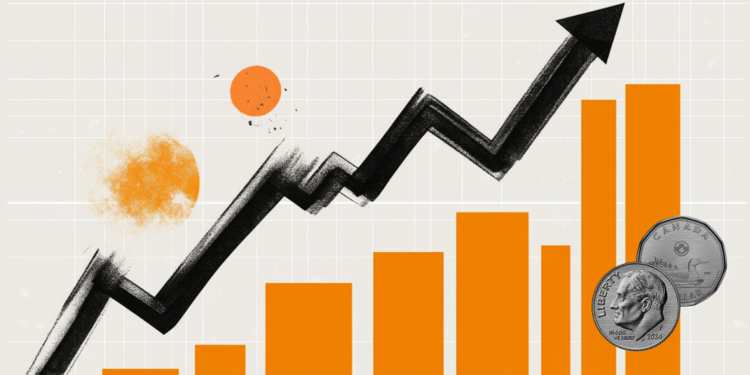- USD/CAD is still 0.35% higher after falling from the intraday high amid fears of Trump’s tariff threats.
- The Canadian economy is expected to be biggest casualty of Trump’s decision to impose 25% tariffs on steel and aluminum from all nations.
- Investors await the Fed Powell’s testimony for fresh interest rate outlook.
The USD/CAD pair surrenders a majority of intraday gains and falls back to near 1.4340 from the intraday high of 1.4380, but is still 0.35% higher in Monday’s North American session. The outlook of the Loonie pair remains firm on widening troubles for the Canadian Dollar (CAD).
Over the weekend, United States (US) President Donald Trump said that he will impose 25% tariffs on imports of steel and aluminum from all nations and reciprocal tariffs over those nations where he finds unfair trade practices. The scenario of tariff imposition on the above-mentioned metals is unfavorable for the Canadian Dollar, given that Canada is the leading exporter of aluminum to the US.
The impact of Trump’s tariffs on metals will also come on trading partners, such as Brazil, Vietnam, Mexico and South Korea.
Last week, the Canadian Dollar attempted to gain ground after President Trump postponed 25% tariffs on all imports from Canada and Mexico after they agrees to cooperate on crime enforcement at borders. Also, surprisingly upbeat Canadian employment data for January offered support to the domestic currency.
Meanwhile, the US Dollar (USD) rises as renewed Trump’s tariff threats have increased its safe-haven appeal. The US Dollar Index (DXY), which tracks the Greenback’s value against six major currencies, trades 0.2% higher around 108.30.
The next trigger for the US Dollar will be the Fed Chair Jerome Powell’s testimony before the Congress on Tuesday and Wednesday. Investors will pay close attention to Powell’s commentary on potential Trump tariffs and their impact on inflation and the monetary policy outlook.
Canadian Dollar FAQs
The key factors driving the Canadian Dollar (CAD) are the level of interest rates set by the Bank of Canada (BoC), the price of Oil, Canada’s largest export, the health of its economy, inflation and the Trade Balance, which is the difference between the value of Canada’s exports versus its imports. Other factors include market sentiment – whether investors are taking on more risky assets (risk-on) or seeking safe-havens (risk-off) – with risk-on being CAD-positive. As its largest trading partner, the health of the US economy is also a key factor influencing the Canadian Dollar.
The Bank of Canada (BoC) has a significant influence on the Canadian Dollar by setting the level of interest rates that banks can lend to one another. This influences the level of interest rates for everyone. The main goal of the BoC is to maintain inflation at 1-3% by adjusting interest rates up or down. Relatively higher interest rates tend to be positive for the CAD. The Bank of Canada can also use quantitative easing and tightening to influence credit conditions, with the former CAD-negative and the latter CAD-positive.
The price of Oil is a key factor impacting the value of the Canadian Dollar. Petroleum is Canada’s biggest export, so Oil price tends to have an immediate impact on the CAD value. Generally, if Oil price rises CAD also goes up, as aggregate demand for the currency increases. The opposite is the case if the price of Oil falls. Higher Oil prices also tend to result in a greater likelihood of a positive Trade Balance, which is also supportive of the CAD.
While inflation had always traditionally been thought of as a negative factor for a currency since it lowers the value of money, the opposite has actually been the case in modern times with the relaxation of cross-border capital controls. Higher inflation tends to lead central banks to put up interest rates which attracts more capital inflows from global investors seeking a lucrative place to keep their money. This increases demand for the local currency, which in Canada’s case is the Canadian Dollar.
Macroeconomic data releases gauge the health of the economy and can have an impact on the Canadian Dollar. Indicators such as GDP, Manufacturing and Services PMIs, employment, and consumer sentiment surveys can all influence the direction of the CAD. A strong economy is good for the Canadian Dollar. Not only does it attract more foreign investment but it may encourage the Bank of Canada to put up interest rates, leading to a stronger currency. If economic data is weak, however, the CAD is likely to fall.
Read the full article here

